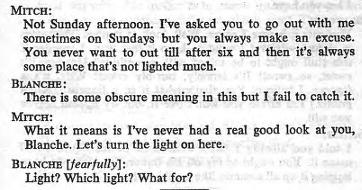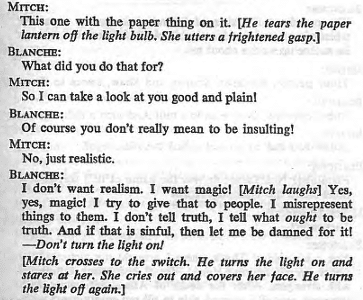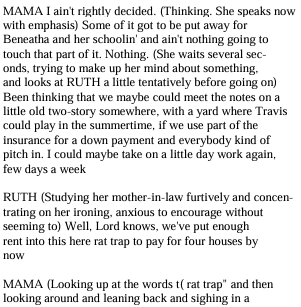
Okay, we know what you’re thinking… have we lost the plot and forgotten we’re a blog covering everything there is to know about the film industry and screenwriting?
Well, you’d be half right. Today we’re swerving past the movie theater and returning to where scripts began – the stage!
Theater has captured the human imagination for centuries. Long before movie cameras and film sets, there were amphitheaters. Today, we have Broadway stages, with the magic of live performance continuing to enthrall audiences around the world.
Plays will always have a special place in our hearts, and behind every great play is a storyteller who crafts dialogue, builds tension and breathes life into characters through their scripts – the playwright.
So, if your curious about writing for the stage, you’re stepping into a rich and rewarding tradition. That’s where we come in, and in today’s blog, we’ll guide you through the essentials of playwriting, what makes it unique, playwriting format, and how you can structure your own stage play.

Let us help you bring your vision to life on stage with our new blog: how do you write a play (for beginners)?
Table of Contents
- What Makes Playwriting Unique
- Essential Elements of a Play
- How to Structure a Play
- Formatting a Play Script
- Writing Strong Dialogue for the Stage
- Examples of Great Playwriting
- Tips for Aspiring Playwrights
- Conclusion
What Makes Playwriting Unique?
Playwriting differs significantly from writing for film or television. Yes, they all involve storytelling through action and dialogue, but theater presents unique constraints and opportunities.
1. Live Performance
Theater offers a different kind of experience for an audience as it’s shown in real time and live. There’s no camera movement, CGI or post-production to consider. Instead, everything must be conveyed through acting, dialogue, set design, and lighting.
The best part is that everything must unfold in one take unlike film and TV where the cast and crew have multiple takes to get things right.
2. Audience Proximity
With live performances comes an audience in super close proximity to the action. While movies and TV shows are consumed passively in a dark theater or in the comfort of our living rooms, in live theater, the audience is mere feet from the stage.
There is an increased level of intimacy and immediacy when watching a play that you can’t always find in a movie theater. Playwrights should use this to their advantage and to heighten the dramatic effect of their work.

Try Celtx’s Stage Play Editor Today (FREE)
3. The Power of Dialogue
In film, you have the advantage of camera angles and shots; a simple glance or cutaway can communicate volumes. However, on stage, it’s the dialogue that must carry the emotional weight and narrative momentum.
If you’re eager to become a playwright, you must learn to master the art of saying a lot with a little.
4. Limited Locations
While set changes are totally viable in a play, they typically take place in a limited number of settings, so it’s advisable to keep these set changes to a minimum. This is usually due to budget and logistical constraints.
Playwrights must be creative in crafting scenes that feel dynamic but in a static space at times.
Essential Elements of a Play
Like film and TV scripts, playscripts just aren’t play scripts without their key elements:
Characters
Every play revolves around its characters. Each should have clear motivations, distinct voices, and develop over the course of the story.
Similar to their film and TV counterparts, play characters are the lens through which the audience experiences the narrative. They need to be relatable!
Setting
The setting is the physical and emotional backdrop for the play. You can choose a specific location such as a living room, battlefield, a bus, or something more outside the box.
Whichever setting you choose; it needs to support the mood and themes of your story.

Dialogue
As we’ve already mentioned, the dialogue is the key in a play, carrying the majority of the emotion and meaning behind the story. It reveals character, advances the plot, and conveys subtext. Great dialogue is purposeful, layered and authentic to each character’s voice.
Acts & Scenes
Most plays are divided into acts and scenes. Acts are the major structural divisions in the story, while scenes mark changes in time or location.
A traditional structure would usually consist of two or three acts, each with multiple scenes that move the story forward.

Let’s take a deeper dive into how you can structure your play:
How to Structure a Play
Structure provides the skeleton for your story. There is, of course, room for experimentation, but most plays follow one of these conventional frameworks.
The Three-Act Structure
The traditional beginning, middle and end.
So, how should a play begin? Well, Act One is the setup, introducing the characters, setting and the central conflict.
Act Two is where the protagonist faces obstacles and complications. Most of the confrontation happens here, and the stakes gradually rise, leading to…
Act Three, when the conflict reaches a climax and is resolved, for better or worse.
Most full-length plays will follow this structure, with the intermission following Act One, with Acts Two and Three together following the intermission.
One-Act Play
If you have an idea that would suit a festival, showcase or have a very specific theme in mind, a one act play could work well, with a running time of around 10 to 45 minutes.
It’s important to choose your structure based on your story’s needs. For example, if you wish to convey a single, powerful moment, this may be better suited as a one-act play, while an epic family drama may demand a full-length play.
Related Reading: Three Act Structure in Screenwriting: A Complete Guide
Formatting a Play Script
A play script’s formatting is crucial, not just for clarity, but for professionalism.
Most theaters, producers, and competitions expect submissions to follow a standard format. So, what is that standard format?
- Title Page (title, writer’s name, contact details, and a brief synopsis or cast list if required)
- Character List (a brief description of each character including age, roles and defining traits)
- Setting and Time (a note about where and when the action takes place)
In terms of the body of the script itself:
- Character Names (all in capitals, centered or left-aligned)
- Dialogue (underneath the character name, single-spaced)
- Stage directions (in italics or parentheses, often indented)
Script formatting may seem complicated, but there are tools out there to make life a little easier.
Here at Celtx, our play-specific template makes formatting simple. Our user-friendly interface for theater scripts and helps maintain consistency throughout your draft. Find out how it works here.
The Dramatists Guild also offers a comprehensive formatting guide which you can find here.

Sign up for Celtx today and elevate your play writing process to new heights!
Writing Strong Dialogue for the Stage
If you want to write a great play, dialogue is your best friend. Here are our top tips on how to write dialogue for a play:
Be Authentic, not Literal
Think about how you and others around you speak. We all have our little quips and ways of talking, which you should consider when writing dialogue.
While real speech includes stutters, fillers and tangents, too much of that on stage can bog down the pace of your story. Aim for speech that feels real while still being tight and purposeful.
Subtext, Subtext, Subtext
Subtext in playwriting is just as important as in film and TV. What’s not said often matters more than what is.
Your characters should rarely speak their innermost truths directly, with the audience able to read between the lines.
Vary Speech Patterns
As we’ve already mentioned, everyone in real life talks differently, so each of your characters should have a unique voice. Every voice should be influenced by the character’s background, education and personality.
For example, a child, academic and a criminal should all sound different.

Use Rhythm and Silence
Don’t underestimate the power of pacing, pauses, and silence. They add tension, reveal emotional depth, or punctuate a dramatic moment. Let your characters breathe during these moments.
Examples of Great Playwriting
If you need a little extra dose of inspiration to start writing your play, then never fear! Perhaps our top picks of classic and modern playwrights who have helped shape the craft as we know it, will help set pen to paper (or fingertip to keyboard!).
William Shakespeare
The OG playwright and gold standard of theatrical language, Shakespeare’s plays have become household names. Think Hamlet, Macbeth, and King Lear, just to name a few.
All explore universal themes with poetic brilliance, showcasing how rhythm, metaphor and structure can elevate storytelling.
In this scene from Act One of Macbeth, Macbeth and Banquo encounter the three witches following a bloody battle. Notice the differing patterns of language between the characters, the pauses and rhythm of the words and the silence between.
Below is the script for this section of the scene. We can see how the dialogue is laid out, both of Banquo’s short monologues written in verse, akin to all of Shakespeare’s work.

Tennessee Williams
Fast forward to the 20th century and the works of Williams who showcases his ability to blend realism with dreamlike elements such as in A Streetcar Named Desire and The Glass Menagerie.
In this scene from A Streetcar Named Desire, protagonist Blanche DuBois expresses her desire for magic, not realism as she’s confronted by her lover, Mitch. This one line summarizes Blanche’s character and how she presents herself – she is a troubled and compulsive liar, which is rooted in this desire to escape the real world and create a new one for her to live in.


Lorraine Hansberry
Her groundbreaking play A Raisin in the Sun was the first play by an African American woman on Broadway. The highly influential piece explored race, identity, and family with nuance and power.
This short scene depicts the difficulties Ruth is facing and the perspectives that Lena, her mother-in-law, lends to the situation, giving us an insight into the divisions of race in early 20th century America.


Celtx makes stage play formatting simple.
Tips for Aspiring Playwrights
You may have had the load down on how to write a play script, but there’s a little more to consider. So, here come our top playwriting tips for refining your work and developing as a playwright.
1. Embrace the First Draft
Don’t aim for perfection straight away. Instead, get your story down, even if it’s a complete mess at this stage. Once you have a first draft, then it’s time to revise!
2. Read Your Work Aloud
Theater is meant to be heard, so reading aloud (or hearing actors read your work) is an invaluable process. It can reveal awkward phrasing, pacing issues and show you where you need to make things clearer to the audience.
3. Workshop Your Play
Join a local playwrights’ group or theater workshop to receive feedback from actors and directors! Hearing your play performed, even informally, brings it to life in a whole new way. Plus, if you can also give feedback on other writers’ work, you can form some great working relationships and build a support network for the future.

4. Make Sure it’s Stageable
Keep technical limitations in mind, especially if this is your first play script. Writing a scene with explosions or complex effects may not be suitable or practical for smaller venues.
5. Submit to Competitions
There are so many opportunities for emerging playwrights from competitions, residencies, festivals and submission calls from local theaters. Make sure to grab them with both hands!
Remember, you will find your work rejected, but that’s all part of the process! Stick to it, and you’ll find your way!
6. Read, Read, and Read
Some of the best preparation you can do is read and watch as many plays as you can. This not only hones your instincts, but you’ll be more attuned to structure, emotional resonance, character arcs, and scene transitions.
Conclusion
Playwriting is a discipline that calls for empathy, structure, creativity, and precision. As a playwright, you’re not just telling a story but creating a blueprint for collaboration, inviting directors, actors, designers, and audiences into your world.
Whether you’re writing your first one-act or dreaming of seeing your name in lights, the journey begins with a single scene. Trust your voice, study the experts, and most importantly, keep writing.
Ready to take your story from just an idea in your head to the stage?
Easily format elements of your script for clear stage direction and keep your dream cast on the same page with the Celtx Stageplay Editor.
Try it for free today!
Made for the stage? Try these articles next:
- From Song to Stage: How to Write a Musical Script
- 10 Tips for Writing Dialogue That Feels Real
- 15 Essential Character Archetypes (And How to Use Them)
